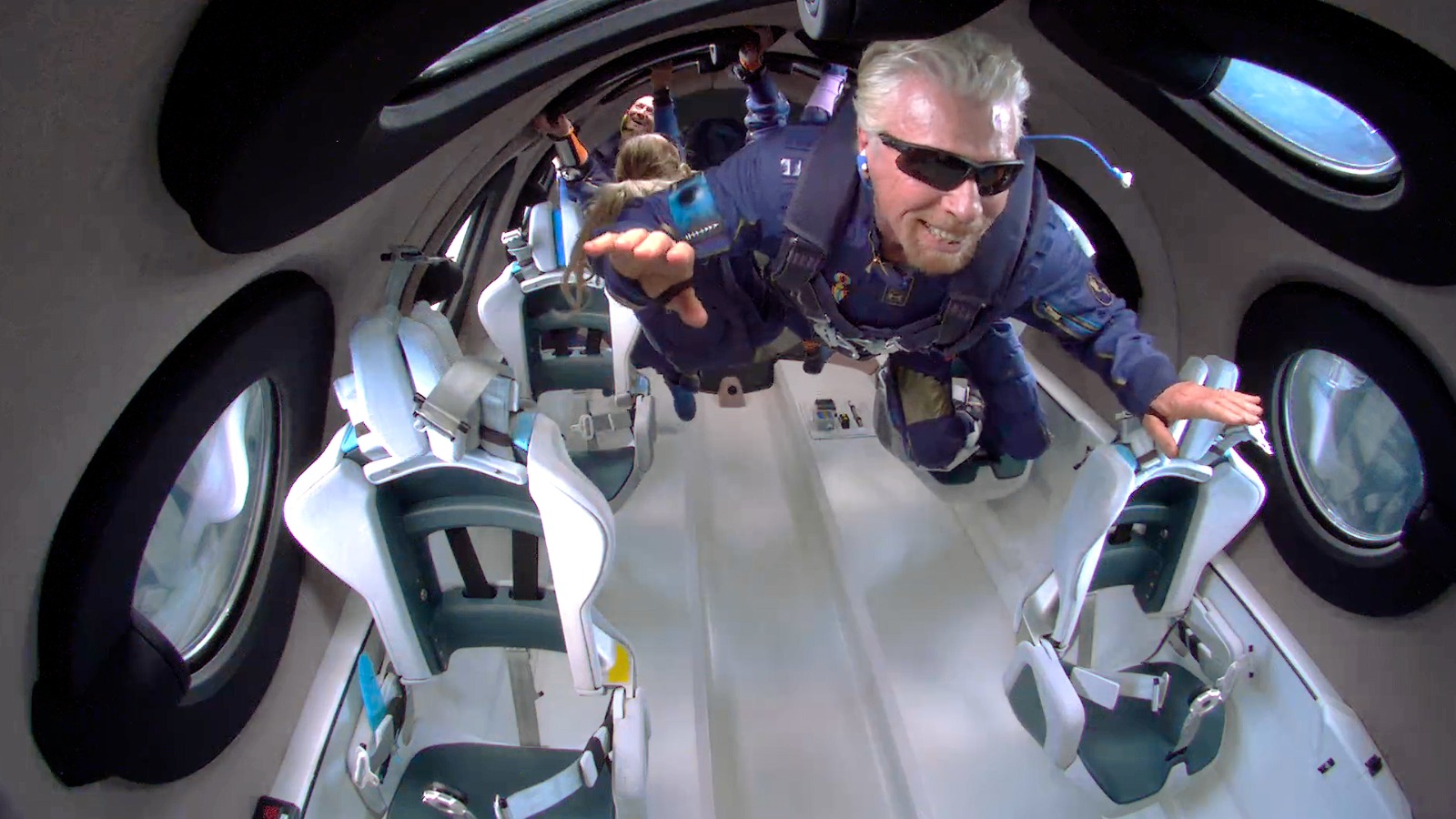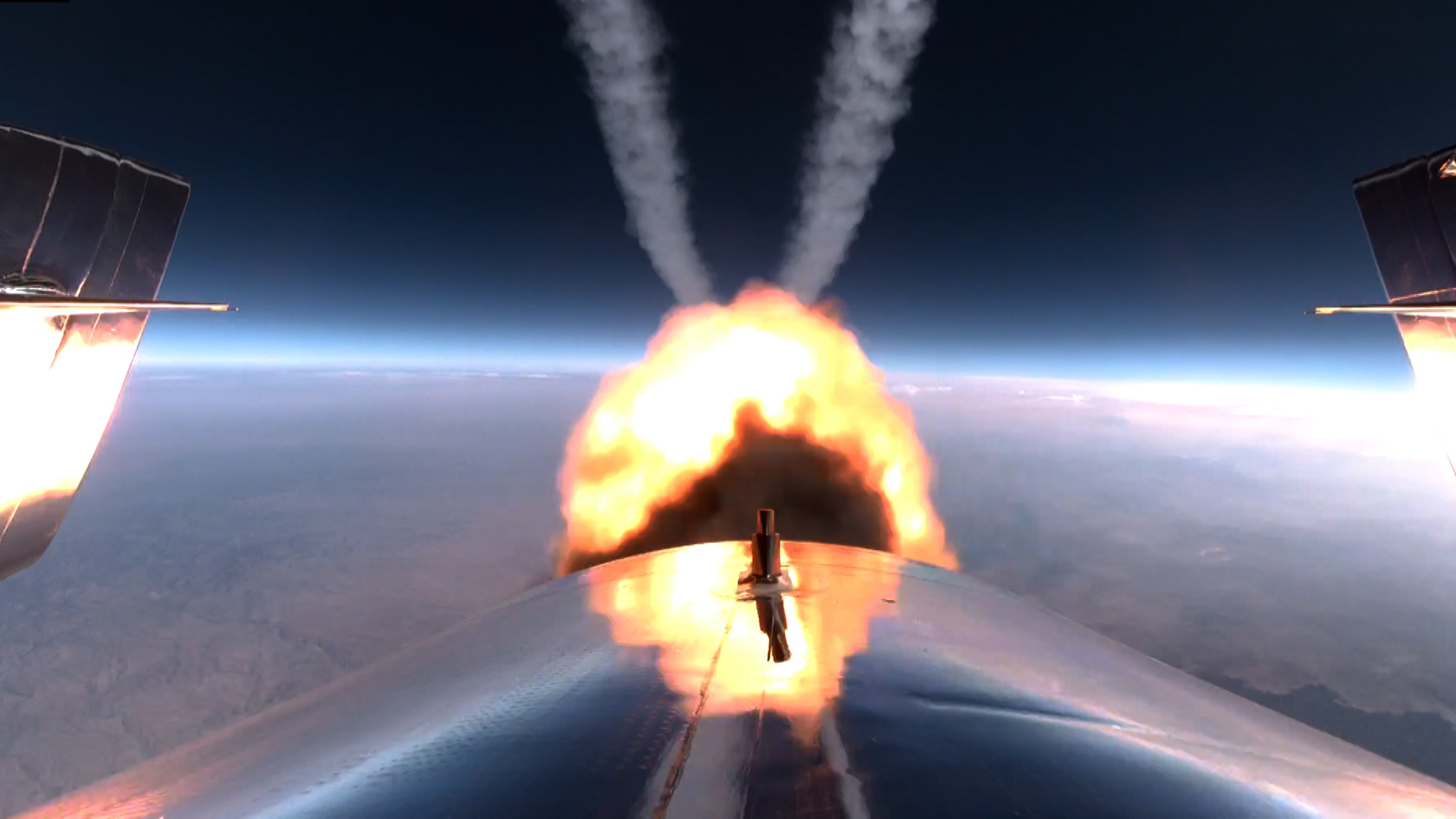Amazing Virgin Galactic video shows Richard Branson's Unity 22 crew soaring into space
New camera views from the cockpit and carrier launch plane follow Richard Branson on his debut flight.
Virgin Galactic has unveiled a dramatic new video of its billionaire founder Richard Branson and five others launching into suborbital space on company's VSS Unity spacecraft and it looks like a heck of a ride.
The clips from Virgin Galactic show highlights of the 90-minute flight that successfully launched to suborbital space Sunday (July 11) from Spaceport America in New Mexico.
The video opens with cockpit views of Branson and fellow passengers, listening to a countdown until VSS Unity is released from its carrier plane, VSS Eve. Moments later, a view from below shows the engine of the spaceplane firing to bring the crew on a suborbital parabola above the Earth's atmosphere.
Related: Virgin Galactic launches Richard Branson to space in 1st fully crewed flight
More: 'Welcome to the dawn of a new space age,' Branson says

As the engine shuts off, the camera view switches to a dramatic view below the spacecraft, showing the deserts of New Mexico and nearby regions.
Of the group, only Moses had been to space before, during a 2019 flight, although the definition of space can vary depending on if you consult the U.S. military, NASA and the Federal Aviation Administration (which together, recognize a boundary at 50 miles or 80 km in altitude) or the internationally recognized Kármán line at 62 miles or 100 km. All Virgin Galactic spaceflights to date have been below the Kármán line, but above the 50-mile mark.
The 70-year-old Branson peers out the window in the video, then gives a small speech reflecting upon the nearly 52-year wait he had to be an astronaut since watching the Apollo 11 astronauts land on the moon in 1969.
Sign up for the Live Science daily newsletter now
Get the world’s most fascinating discoveries delivered straight to your inbox.
"To all you kids down there, I once was a child with a dream looking up to the stars. Now, I'm among them in a spaceship," said Branson, a billionaire who founded Virgin Galactic in 2004 to open up private spaceflight to more people while giving himself the chance to become an astronaut, too. (Ticket prices remain high at $250,000 a seat, although Virgin Galactic announced a contest to bring two members of the public into space in 2022.)
Related: What to know about Virgin Galactic's SpaceShipTwo Unity 22 launch

"If we can do this, just imagine what you can do," Branson adds, as his crew members gleefully (and carefully) bounce off the walls of the spacecraft nearby. The usually athletic Branson, who rode to the launch pad on a bike, appears to prefer carefully balancing just above the seats while floating, repeatedly crying "Oh my God" before proclaiming "This is just too unbelieveable."
As views of the Earth and sun below float by the windows, the crew finishes up their four minutes of weightlessness with more window-gazing; in the case of Bandla, there's a brief glimpse of her manipulating the tube containing a NASA-funded experiment by the University of Florida to study plant behavior in microgravity. Future Virgin Galactic spaceflights will also fly such experiments to do microgravity research.
The pilots then issue a command to the crew to return to their seats and strap in for re-entry. The video closes with VSS Unity soaring once again above Spaceport America en route to a touchdown. In the closing seconds, Branson enthusiastically gives a double-thumbs up to the camera.
Follow Elizabeth Howell on Twitter @howellspace. Follow us on Twitter @Spacedotcom and on Facebook.

Elizabeth Howell was staff reporter at Space.com between 2022 and 2024 and a regular contributor to Live Science and Space.com between 2012 and 2022. Elizabeth's reporting includes multiple exclusives with the White House, speaking several times with the International Space Station, witnessing five human spaceflight launches on two continents, flying parabolic, working inside a spacesuit, and participating in a simulated Mars mission. Her latest book, "Why Am I Taller?" (ECW Press, 2022) is co-written with astronaut Dave Williams.










